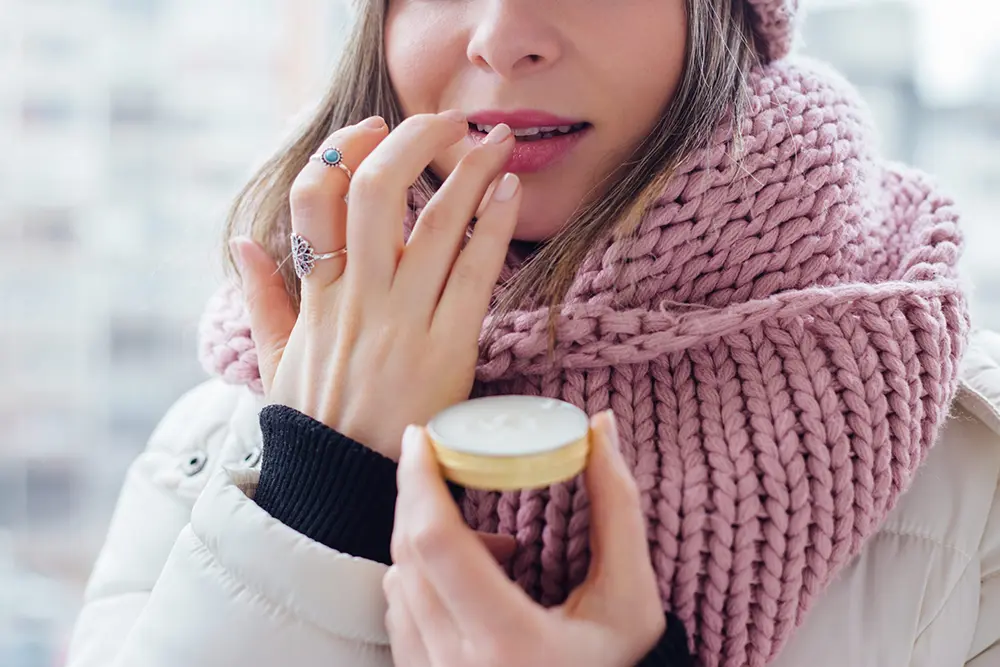Winter may bring cozy sweaters, hot cocoa, and festive vibes, but for your skin, it’s a whole different story. The cold air outside combined with indoor heating creates the perfect storm for dryness, irritation, and dullness. It’s like your skin goes from thriving to barely surviving, and your usual skincare routine doesn’t seem to cut it anymore. Sound familiar?
The truth is, winter isn’t just a season; it’s a full-on assault on your skin’s natural defenses. Low humidity in the air draws moisture away from your skin, and harsh winds can leave it red, flaky, and sensitive. Meanwhile, indoor heating zaps any remaining hydration, making it a struggle to keep that healthy glow. If you’re skipping sunscreen because the sun’s taking a backseat, or you’re still using lightweight summer moisturizers, you’re setting yourself up for skincare disaster.
But don’t worry—transitioning your skincare routine for winter isn’t as complicated as it sounds. It’s all about tweaking your regimen to work with the season, not against it. Think of it like swapping your summer wardrobe for warm, cozy layers; your skin just needs a little extra TLC to stay hydrated, protected, and radiant.
In this guide, we’ll break down exactly how to adapt your skincare routine for winter step by step. From upgrading your moisturizer to making friends with a humidifier, you’ll learn practical, science-backed strategies to help your skin thrive no matter how chilly it gets. Whether you’re battling dryness, redness, or winter breakouts, we’ve got expert tips and product recommendations to make the transition seamless.
Ready to glow all winter long? Let’s dive in!
Why Winter Affects Your Skin Differently
Your skin’s condition is influenced by the environment, and winter’s low humidity levels combined with cold temperatures significantly reduce the skin’s natural ability to retain moisture. This leads to an increase in transepidermal water loss (TEWL)—a phenomenon where water evaporates from the skin’s outer layer, leaving it dry, tight, and vulnerable to irritation.
On top of that, indoor heating systems add to the problem by drawing moisture out of the air, creating an environment that’s especially dehydrating for your skin. Reduced sunlight exposure also means your skin may produce less vitamin D, which can affect its overall health and radiance. A thoughtful skincare routine for winter can address these challenges and keep your skin glowing all season long.
Common Winter Skin Issues
- Dryness and Tightness: Your skin feels stretched, flaky, or rough.
- Irritation and Sensitivity: Redness, itching, and stinging sensations may become more common.
- Chapped Lips: The thin skin on your lips is especially prone to cracking in the cold.
- Breakouts: A compromised skin barrier can lead to inflammation, clogging, and acne.
- Dullness: Lack of moisture often results in a lackluster complexion.

Step-by-Step Guide: How to Transition Your Skincare Routine for Winter
Winter is the time when your skin demands extra care and attention. The transition from a warm, humid environment to cold, dry air can wreak havoc on your skin, but with the right steps, you can keep it healthy, hydrated, and glowing. Here’s your ultimate guide to adjusting your skincare routine for winter months, step by step.
Step 1: Upgrade to a Hydrating Cleanser
Cleansing is the foundation of any skincare routine, but the type of cleanser you use can make or break your skin during winter. While foaming or gel-based cleansers are excellent for removing summer sweat and excess oil, they can be too harsh in winter, stripping your skin of its natural oils. This leaves your skin feeling tight, dry, and irritated.
What to Do Instead
Switch to a creamy or oil-based cleanser. These cleansers are formulated to gently remove dirt and makeup without compromising your skin’s barrier. They clean effectively while delivering a boost of hydration, which is exactly what your skin craves in winter.
Key Ingredients to Look For
- Glycerin: A humectant that draws water from the environment into your skin, leaving it plump and hydrated.
- Ceramides: Essential for maintaining and repairing the skin barrier, ceramides lock in moisture and prevent transepidermal water loss.
Pro Tip: Cleanse twice daily, but avoid hot water—it can strip your skin further. Stick to lukewarm water for a gentle cleanse.
Step 2: Adjust Your Moisturizing Strategy
Think of your skincare routine like dressing for winter: layering is key. To effectively combat dryness, your products should work together to hydrate, seal, and protect your skin.
How to Layer for Maximum Hydration
- Start with a Hydrating Serum: Apply a serum rich in hyaluronic acid to damp skin immediately after cleansing. Hyaluronic acid acts like a sponge, binding moisture to the skin.
- Seal with a Rich Moisturizer: Follow up with a cream containing occlusive ingredients like shea butter or dimethicone. These create a barrier that locks in hydration.
- Finish with a Facial Oil: Add a few drops of squalane or argan oil to your routine to protect your skin from harsh winds and cold air. Oils not only provide an extra layer of hydration but also give your skin a winter glow.
Why It Works
This layering method ensures hydration penetrates deep into the skin while providing an external barrier to lock it in.
Step 3: Don’t Forget SPF
Here’s the truth: sunscreen is a year-round essential. Even though the sun might feel weaker in winter, UV rays are just as harmful, and they’re often intensified by snow, which reflects up to 80% of sunlight. Without protection, your skin is at risk of sun damage, premature aging, and hyperpigmentation.
What to Use
- Mineral Sunscreens: Look for formulas with zinc oxide or titanium dioxide, which are gentle on sensitive winter skin.
- Chemical-Free Options: These are ideal for those prone to irritation during colder months.
Pro Tip: Reapply sunscreen every two hours if you’re spending extended time outdoors, especially on snowy days.
Step 4: Focus on Skin Barrier Repair
Cold weather can compromise your skin’s natural barrier, leaving it vulnerable to irritation, dryness, and breakouts. Strengthening this barrier is crucial for maintaining healthy skin throughout winter.
Barrier-Friendly Ingredients
- Ceramides: These replenish and repair the skin’s lipid layer, locking in moisture.
- Niacinamide: A multitasker that reduces redness, inflammation, and improves skin texture.
- Peptides: Promote collagen production and keep your skin supple and firm.
How to Incorporate Them
Use a barrier-repairing moisturizer or a serum with these ingredients, especially at night when your skin regenerates.

Step 5: Reassess Exfoliation
Exfoliation is a necessary step to remove dead skin cells, but overdoing it in winter can strip your skin of essential oils and damage its barrier. It’s time to tone down the frequency and switch to gentler options.
Gentle Winter Exfoliation Tips
- Use chemical exfoliants like lactic acid or fruit enzymes, which are less abrasive than physical scrubs.
- Limit exfoliation to once or twice a week.
DIY Winter-Friendly Exfoliation Recipe
Mix 1 tablespoon of plain yogurt with 1 teaspoon of honey. The yogurt contains lactic acid for gentle exfoliation, while honey hydrates and soothes your skin.
Step 6: Add a Humidifier to Your Routine
Dry indoor heating can leave your skin parched. Enter the humble humidifier—a winter skincare hero. By adding moisture back into the air, it helps prevent your skin from losing hydration.
How to Use It Effectively
- Keep your humidifier running in your bedroom while you sleep.
- Aim for an indoor humidity level of 40-60%.
Bonus Benefits
Humidifiers not only improve your skin but also prevent dry hair, chapped lips, and irritated sinuses.
Step 7: Tailor Your Treatments to Nighttime
Nighttime is when your skin is in repair mode, making it the best time to apply deeply hydrating and reparative treatments.
What to Use at Night
- Overnight Masks: Look for masks with ceramides, hyaluronic acid, or peptides to nourish your skin while you sleep.
- Retinol Creams: If you use retinol, pair it with a rich moisturizer to reduce irritation.
- Facial Oils: Apply a few drops of argan or rosehip oil as the last step of your routine for an extra moisture boost.
Pro Tip: Layer heavier products at night to wake up with soft, glowing skin.
Step 8: Protect the Skin You Forget About
Your hands, neck, and lips often bear the brunt of winter’s harsh conditions, but they’re often neglected in skincare routines.
How to Protect These Areas
Neck: Don’t stop your skincare at your jawline! Apply your moisturizer and sunscreen to your neck as well.
Lips: Use a balm with occlusive ingredients like beeswax or lanolin to prevent chapping.
Hands: Moisturize after every wash with creams that contain glycerin or urea. Wear gloves to protect your hands outdoors.

Winter Skincare for Different Skin Types
Everyone’s skin reacts to winter differently, so tailoring your skincare routine to your skin type is key. A well-thought-out skincare routine for winter can help combat dryness, irritation, or even unexpected breakouts caused by the season’s harsh conditions. Whether your skin gets flaky and dry, shiny and oily, or easily irritated, the right approach can make all the difference. Focus on hydrating cleansers, rich moisturizers, and protective products that strengthen your skin barrier while addressing your specific skin concerns. Here’s how to keep your skin happy and glowing during the cold months, no matter your skin type.
Dry Skin
If you have dry skin, winter can feel like a never-ending battle. The cold air outside and dry indoor heat can strip your skin of whatever moisture it has left, leaving it tight, itchy, and prone to flaking. The good news? A few small changes can bring your skin back to life.
- Switch to a Richer Moisturizer: Lightweight lotions won’t cut it in winter. Instead, opt for moisturizers loaded with emollients (like shea butter) and occlusives (like petrolatum) to lock in hydration. Products with ceramides are also a great choice because they help restore your skin’s natural barrier.
- Avoid Harsh Cleansers: Those squeaky-clean foaming cleansers can do more harm than good in winter. They strip your skin of essential oils, worsening dryness. Instead, try a cream or oil-based cleanser that hydrates while it cleanses.
- Double Down on Hydration: Layering a hyaluronic acid serum under your moisturizer adds an extra punch of hydration. Just remember to apply it to damp skin—it needs water to work its magic.
Pro Tip: Consider adding a humidifier to your room. Boosting indoor humidity can prevent your skin from drying out while you sleep.
Oily Skin
Winter might seem like a break from the constant battle against shine, but oily skin still needs attention when the temperatures drop. In fact, skipping moisturizer in an attempt to control oil can backfire, making your skin produce even more sebum to compensate.
- Don’t Skip Moisturizer: Yes, you still need it! Look for a lightweight, gel-based moisturizer that hydrates without clogging pores. Ingredients like glycerin and hyaluronic acid are perfect for oily skin.
- Control Shine: Keep blotting papers handy for midday touch-ups. These absorb excess oil without disturbing your makeup or skincare.
- Exfoliate, But Don’t Overdo It: Gentle exfoliation is important to prevent clogged pores, but avoid harsh scrubs or over-exfoliating, which can irritate your skin. Aim for a mild chemical exfoliant like salicylic acid once or twice a week.
- Use a Balancing Toner: A toner with niacinamide can help regulate oil production while soothing your skin.
Pro Tip: Oily skin can still get dry patches in winter. Spot-treat these areas with a richer moisturizer instead of slathering your whole face.
Sensitive Skin
Sensitive skin and winter often don’t mix well. Cold winds, dry air, and even hot showers can trigger redness, itching, or irritation. The key is to focus on calming, gentle products that keep your skin soothed and hydrated.
- Stick to Fragrance-Free Products: Fragrances can be a major irritant for sensitive skin, so look for hypoallergenic, fragrance-free options.
- Soothing Ingredients Are Your Best Friend: Ingredients like aloe vera, chamomile, and calendula can calm redness and irritation. Look for these in moisturizers, serums, or even face masks.
- Avoid Overwashing: Washing your face too often can strip your skin and worsen sensitivity. Once in the morning and once at night is enough.
- Say No to Hot Water: It might feel amazing on a cold day, but hot water can strip your skin of its natural oils and leave it even more vulnerable. Use lukewarm water instead.
- Barrier Repair is Crucial: Sensitive skin tends to have a compromised skin barrier. Products with ceramides and niacinamide can help rebuild and protect it.
Pro Tip: Always do a patch test before trying new products, especially in winter. Sensitive skin is more reactive in colder months, so it’s better to be safe than sorry.

Combination Skin
Got dry patches on your cheeks but an oily T-zone? Winter can be tricky for combination skin, but it’s all about finding balance.
- Use a Multi-Moisturizer Approach: Apply a rich, creamy moisturizer to dry areas (like your cheeks) and a lightweight gel moisturizer to oily areas (like your forehead and nose).
- Exfoliate Strategically: Focus on oily areas prone to clogged pores, but avoid exfoliating drier patches. A mild chemical exfoliant like lactic acid can target both without over-drying.
- Spot Treat Breakouts: Use a salicylic acid-based treatment for any blemishes, but don’t apply it all over your face unless necessary.
- Hydrate Without Overloading: A hyaluronic acid serum works wonders for combination skin because it hydrates without adding excess oil.
Mature Skin
As we age, our skin naturally loses moisture and elasticity, and winter can exacerbate these issues. Mature skin requires extra care during colder months to keep it looking radiant and youthful.
- Use a Rich, Anti-Aging Moisturizer: Look for moisturizers with peptides, ceramides, and antioxidants like vitamin C or E. These ingredients help hydrate and fight signs of aging.
- Incorporate Retinol Carefully: Retinol is great for mature skin but can be drying in winter. Pair it with a hydrating cream or use it less frequently if needed.
- Don’t Forget Your Neck: The delicate skin on your neck needs just as much care as your face. Apply your skincare products there, too.
Pro Tip: Overnight masks can be a game-changer for mature skin, providing deep hydration and nourishment while you sleep.
Conclusion: How to Transition Your Skincare Routine for Winter?
Transitioning your skincare routine for winter doesn’t have to be a hassle. With a few thoughtful changes—like swapping your cleanser, layering hydration, and focusing on barrier repair—you can keep your skin glowing, hydrated, and healthy all season long. The key is to listen to your skin’s needs and adapt your routine as winter progresses.
Consistency is everything. Start small by introducing richer moisturizers, using sunscreen daily (yes, even in winter!), and investing in hydrating products that truly nourish your skin. These simple steps will help you tackle dryness, irritation, and other cold-weather woes with ease.
Ready to give your skin the care it needs? Explore our related articles for more expert tips and tricks, and don’t forget to share this guide with a friend who might need it. Here’s to radiant, winter-proof skin!
Related Articles on BeautyStyleMag
- Skincare Routine for Every Age; From Your 20s to Your 50s and Beyond
- 10 Skincare Mistakes to Avoid for Healthier Skin
- How to Transition Your Skincare Routine from Summer to Fall?
For more inspiration, check out reliable resources like webmd.com and healthline.com for expert advice.









